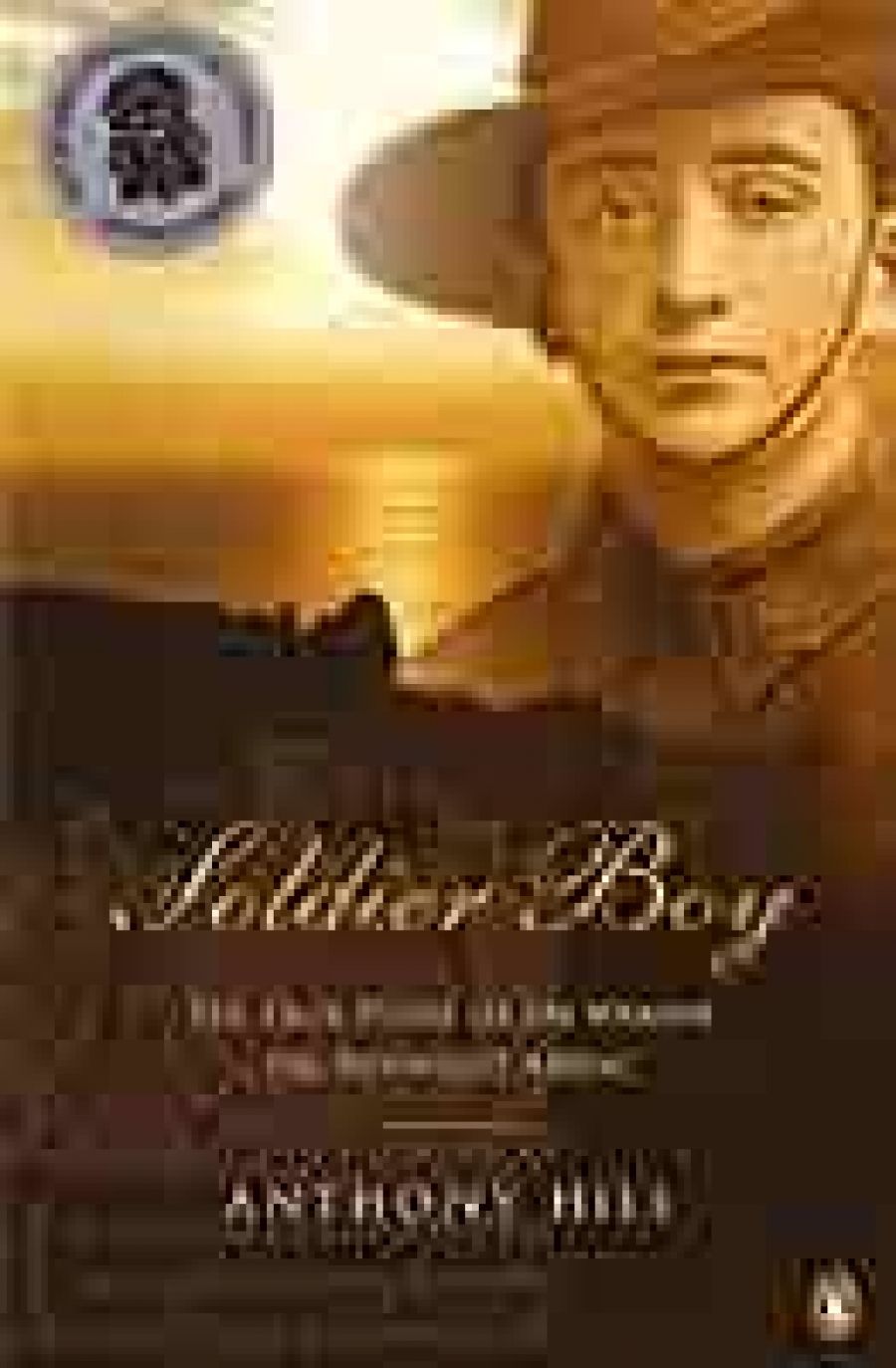
- Free Article: No
- Contents Category: Biography
- Review Article: Yes
- Article Title: Ripeness Is All
- Online Only: No
- Custom Highlight Text:
Anthony Hill begins his biography of Jim Martin by describing Martin’s death. Beginning the story of a person’s life by going straight to the end is unusual but wholly appropriate in this case because Jim Martin’s fame lies solely in the fact that his death at the age of fourteen, at Gallipoli, makes him the youngest known Australian soldier ever to die in a war.
- Book 1 Title: Soldier Boy
- Book 1 Subtitle: The True Story of Jim Martin the Youngest Anzac
- Book 1 Biblio: Penguin, $17.95 pb, 174 pp
After training in Australia and Egypt, Jim landed at Gallipoli on 7 September. In this latter part of the campaign, there was little fighting on the peninsula, but disease was rife. Jim soon caught typhoid and died on 25 October 1915, a few hours after being evacuated to a hospital ship. When Amelia heard the news of her son’s death, shock and the guilt of having allowed him to enlist turned her hair white overnight.
Anthony Hill, as speech-writer to Bill Hayden when he was Governor-General, first learned of Jim Martin while preparing speeches for a vice-regal visit to Gallipoli. Soldier Boy is not only a simple, eloquent description of Martin’s life but also a good introduction for the general reader to the Gallipoli campaign and the making of the Anzac Legend. Soldier Boy will be suitable for use in schools, and will probably appear in classrooms around Anzac Day for years to come. However, Hill does portray Martin with undue innocence. He has Martin not smoking until his enlistment; Hill’s Martin visits all the favourite haunts of Australian soldiers in Egypt – except the Cairo brothels.
Soldier Boy, as is proper for a work of popular history, offers no new insights on Gallipoli or the Anzac Legend. The Australian perception of Gallipoli, established by C.E.W. Bean in the World War I official histories, has never really been challenged. Surely, some reassessment is long overdue. Hill repeats Bean’s idea that the landing at Anzac Cove established a separate Australian identity. But Australian soldiers in 1915 still considered themselves part of a wider British identity and longed to be viewed as British soldiers. Hill mentions, without realising its implications, that when Jim Martin’s battalion was photographed in Egypt they preferred to wear the pith helmets issued to British soldiers rather than their Australian slouch hats. In fact, most Australian troops who landed at Anzac Cove on 25 April 1915 wore British-issue caps, and, when George Lambert was commissioned to paint Gallipoli – The Landing, he was told to fudge the truth and portray the soldiers wearing slouch hats.
With the publication of Soldier Boy, Jim Martin’s position as the latest embodiment of the Anzac Legend seems assured. During the recent centenary of the Australian Army parade in Canberra, Lady Deane laid flowers at Martin’s name on the Australian War Memorial’s Roll of Honour. As a teenage Anzac, Martin is seen as a figure to whom today’s teenagers can relate. Just as Albert Jacka, who personally killed seven Turks and won the Victoria Cross, was replaced as a symbol of Anzac by John Simpson, the caregiver, perhaps we are now seeing Simpson being replaced by Jim Martin, carefully chosen to appeal to a new generation and to continue the Anzac Legend.


Comments powered by CComment